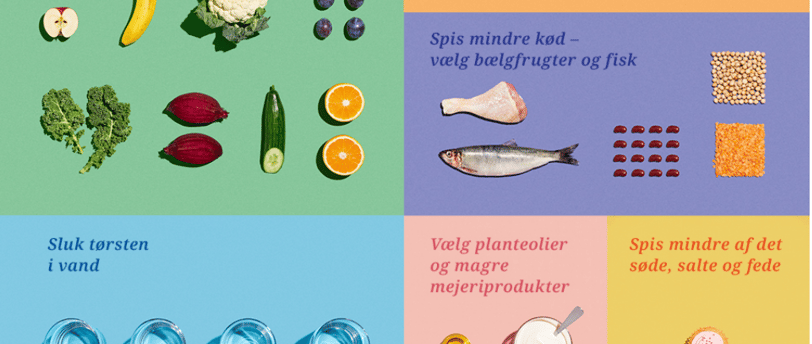Why Denmark’s Nutrition Guidelines Are Ahead of New Zealand’s (And What We Can Learn).
Denmark’s nutrition guidelines prioritize both health and sustainability, aligning with the EAT-Lancet report’s call for a more plant-based diet. In contrast, New Zealand’s focus remains on health without addressing the environmental impact of food choices. With high meat and dairy consumption, could New Zealand learn from Denmark’s approach?
Nick Godfrey
2/15/20254 min read


Denmark’s dietary guidelines, updated in 2021, take a progressive approach by integrating both nutritional science and environmental sustainability. Unlike many national dietary recommendations that focus solely on health, Denmark’s guidelines explicitly consider the planetary impact of food choices—a principle strongly aligned with the EAT-Lancet Commission’s planetary health diet.
The EAT-Lancet report, a landmark study published in 2019, proposed a global diet that optimally balances human health and environmental sustainability. It emphasizes more plant-based foods, less red meat, and sustainable food production as key factors in feeding the world’s population while reducing greenhouse gas emissions, biodiversity loss, and water usage. Denmark’s dietary guidelines closely mirror these principles, making it one of the few nations actively aligning public health policy with sustainable food systems.
Key Principles of the Danish Guidelines:
Eat plant-rich, varied, and not too much – A high intake of vegetables, fruits, whole grains, legumes, and nuts is encouraged.
Eat more vegetables and fruit – Increasing plant-based food consumption is a central focus.
Eat less meat – choose legumes and fish – Denmark strongly advises reducing meat consumption, especially from four-legged animals, and opting for plant-based proteins or seafood instead. This is a major alignment with the EAT-Lancet recommendations.
Eat whole grains – Whole grains like rye, oats, and whole wheat are emphasized as primary carbohydrate sources.
Choose vegetable oils and low-fat dairy products – Plant-based fats are preferred over animal fats.
Eat less of the sweet, salty, and fatty foods – Processed foods high in added sugars and unhealthy fats should be minimized.
Drink water – Water is the recommended primary beverage.
By embedding sustainability into national nutrition policy, Denmark is at the forefront of a global shift toward dietary recommendations that address both health outcomes and climate responsibility.
How New Zealand’s Guidelines Compare
New Zealand’s nutrition guidelines share some core similarities with Denmark’s, such as the emphasis on plant-based foods, whole grains, and reducing processed foods. However, there are key differences in focus, particularly around sustainability, dairy, and meat consumption.
Sustainability: A Missing Factor in New Zealand’s Guidelines
Denmark integrates climate-conscious food choices directly into its guidelines, while New Zealand’s guidelines focus primarily on health outcomes. The EAT-Lancet report warns that current global dietary patterns, especially high meat consumption, are unsustainable, yet New Zealand does not recommend reducing meat for environmental reasons.
This is significant because New Zealand is one of the world’s largest meat and dairy producers. In 2024, New Zealand produced approximately 21.1 million metric tons of milk, with 95% of its dairy production exported. (Statista) Comparatively, Denmark produces around 5.69 billion kilograms of milk, but 30% of its domestic milk consumption is organic, reflecting a greater consumer emphasis on sustainability. (Danish Dairy Board)
Similarly, New Zealand has 3.7 million beef cattle and 24.4 million sheep, with 80% of beef and 95% of lamb exported. (Stats NZ) Despite this, per capita meat consumption remains high, with Kiwis consuming 52.7 kg of meat per year, primarily beef, lamb, and poultry. (IBISWorld)
Denmark, in contrast, consumes 93 kg of meat per capita annually, with a higher proportion of pork consumption. However, Denmark’s guidelines encourage reducing red meat consumption, a move directly aligned with EAT-Lancet’s planetary health diet, while New Zealand does not. (The Australian)
The Role of Dairy: A Cultural and Economic Divide
New Zealand places greater emphasis on dairy consumption, recommending 2-3 servings of milk or milk products daily, preferably low- or reduced-fat options. This reflects New Zealand’s strong dairy industry, which contributes over 20% of the country’s total exports. In contrast, Denmark includes dairy but does not highlight it as essential to the same extent. The EAT-Lancet report suggests reducing dairy intake in favor of more plant-based sources of nutrition, making Denmark’s approach more aligned with global sustainability goals.
Meat Consumption: An Untouched Issue in New Zealand’s Guidelines
Denmark’s guidelines actively advise reducing red meat intake, while New Zealand continues to frame meat as a key part of a healthy diet. The EAT-Lancet report strongly advises limiting red meat to about 14g per day (or 100g per week) to reduce environmental impact, a stark contrast to New Zealand’s more traditional approach to meat consumption.
Serving Size vs. Dietary Patterns
Denmark focuses on broad dietary patterns rather than strict serving sizes, making the recommendations more flexible and adaptable to different lifestyles. New Zealand, however, provides detailed serving size guidelines, which can be useful but may also feel more rigid and harder to implement in daily life.
Physical Activity and Food Safety
New Zealand’s guidelines include specific advice on physical activity (at least 30 minutes of moderate activity daily) and food safety practices, while Denmark does not integrate these into its nutrition recommendations.
What New Zealand Could Learn from Denmark (and the EAT-Lancet Report)
New Zealand’s nutrition guidelines provide clear and practical advice for maintaining a healthy diet, but they lack an explicit sustainability component. Given the EAT-Lancet report’s strong recommendation to transition toward more plant-based diets, New Zealand could benefit from:
Encouraging a shift away from high meat consumption toward more plant-based proteins for both health and environmental reasons.
Reducing the emphasis on dairy as an essential part of a healthy diet, in line with global sustainability efforts.
Incorporating sustainability messaging to help New Zealanders make choices that benefit both their health and the planet.
Denmark’s approach demonstrates that public health and planetary health are deeply connected. As the world moves toward more sustainable food systems, New Zealand has an opportunity to adapt its nutrition guidelines to reflect both scientific advancements and global sustainability goals—a move that could benefit future generations and the environment alike.


